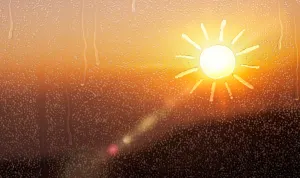
This massive forest is full of clones, and it's in trouble
This may look like a forest, but it's actually an army of clones.
One of the world's largest organisms, this 43-hectare stretch of aspen trees is actually all descended from one parent. The estimated 47,000 trees in the grove, which is located in the Fishlake National Forest in Utah, are all genetically identical and share a root system. Quaking aspens reproduce asexually like this, by sending up new stems from one root structure. It's easy to see how the organism got its name, then: Pando, Latin for "I spread."
And ancient original aspen responsible for the grove has been spreading for a long time. Most estimates put the age of the plant at 80,000 years, with some more generous assessments putting it at over 1 million years of age. Some of the individual trees are currently more than 130 years old.
SEE ALSO: Canada's forests actually emit more carbon than they absorb
Researchers are worried Pando may now be facing its biggest challenge in the past million years, as the 'Trembling Giant' seems to be in danger.
"[The] first comprehensive assessment of conditions at the famed Pando aspen clone reveals an ancient forest threatened by recent human decisions," concluded researchers in a study published last year. While familiar threats like pests, drought, and human encroachment featured in the team's concerns, they found the main threat was from grazing animals, like deer and elk.
Pando's older stems die off all the time, but they're routinely replaced by new shoots. Or, they were, until recently. The image below shows how the forest has changed over the last seventy-two years. In particular, it shows how the dense grove has been thinning -- a process that's been accelerating for the past 30 or 40 years.

A seventy-two-year aerial photo chronosequence showing forest cover change within the Pando aspen clone, Utah, USA. Image courtesy PLOS.
Why are humans to blame for grazing deer and elk? The researchers blame lack of regulation in the herbivore population, both in the way we've eliminated predators, and thanks to "policies encouraged by sportsmen to maintain high game populations."
Without the growth of newer stems to replace the dying, older trunks, the team fears Pando may succumb to this shrinking pattern until there's nothing left of it at all.
"There should be no confusion over the point that both domestic and wild herbivore populations are governed by people’s preferences and actions," reads the study's conclusion, "and that those decisions result in long-term consequences."
Thumbnail credit: J Zapell/U.S. Forest Service
Sources: PLOS | Atlas Obscura | Forbes |









